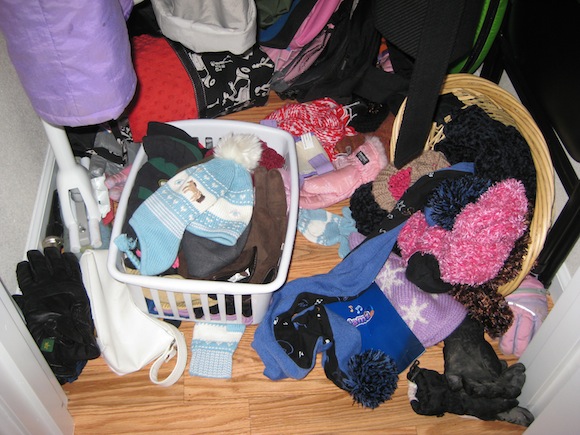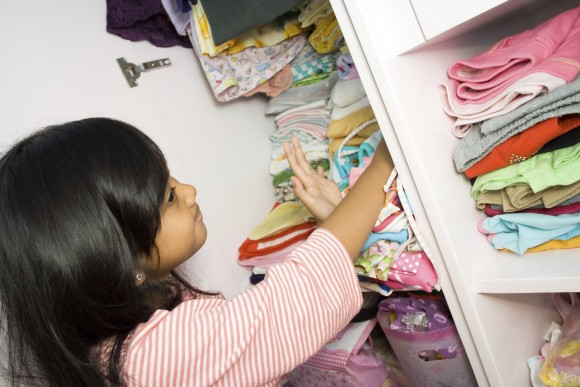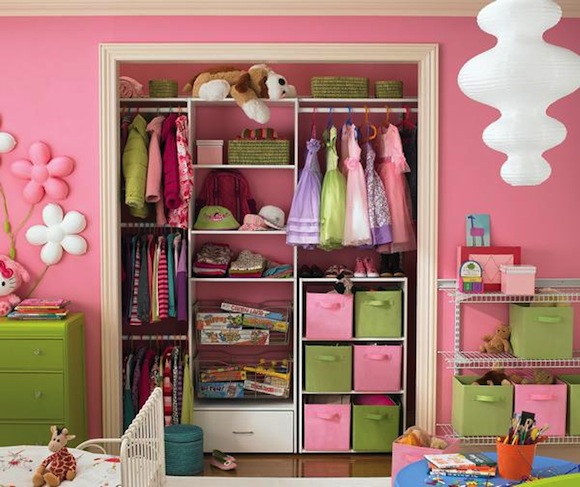Few things in life are better than a well organized closet. Not only does it streamline the morning routine, but it also enables some independence in your child or toddler. That’s why kids’ closet organization is so important. And so, this guide will provide several closet organization ideas that can be used to remove clutter and make your closet system more efficient.
Fortunately, finding what your child loves, and pinpointing smart spots to store items, will naturally lead to a streamlined space. It all begins with the right mindset. “When it comes to kids, you have to be realistic about what you keep,” professional organizer Robyn Reynolds said.
Follow these eight tips for getting your child’s closet into tip-top shape.
Getting Started
If your child’s closet is especially disorganized, it can be difficult to know where to start. Beginning with a blank slate can make the task of starting much less overwhelming. Hence, your first step should be to completely empty your child’s closet. Remove absolutely everything from the closet, including any hangers, shelves and storage bins that may be there.
For the project, choose a day and block off a few hours, professional organizer Kristin MacRae suggested. Then, start by taking everything out of the closet.
As you pull out items, place them in categories. Put clothes in one pile and toys in another. Place goods that could be stored somewhere else, such as seasonal sporting goods, extra bedding or photo albums, in a different stack.
Decluttering and Sorting
Once the closet has been emptied and cleaned, it’s time to start decluttering and sorting. First lay out all of your little one’s clothes. Any clothes that your child has outgrown or doesn’t wear anymore should be placed in the appropriate piles.
After creating a pile of your child’s clothes, sort through each item. Clothing that no longer fits can be stored for a younger sibling, placed in a bag to give away, or set aside to sell online or at a garage sale. For online sales, consider tools such as ThredUP that let you buy and sell apparel.
Stash clothes that your child will grow into, professional organizer Bonnie Dewkett suggested. Perhaps the closet can hold a container of clothes that are a couple of sizes too big in the closet. If not, consider storing that container under a bed.
After removing the clutter, it’s time to sort what remains. When sorting, group like items together. Place shorts with shorts and shirts with shirts.
Get Your Child Involved
Ask your son or daughter to look through the pieces with you. You might find your kid doesn’t regularly wear or isn’t interested in some shirts or pants.
To reduce the number of toys, ask your child to give some away. Dewkett said that rather than making the donation open-ended, give your son or daughter a container, such as a laundry basket, to fill. This way, kids “won’t feel as though they have to donate all of their toys,” she said.
Allocating Closet Space
When everything is sorted, it’s time to start dividing the closet and allocating different items to each section. If the closet is shared by multiple children, it’s a good idea to first divide the closet space between them. Aim to divide the closet as evenly as possible and try to allocate an equal number of cubbies and shelves to each child. Clothes dividers can be used to ensure your little one knows what belongs where, thereby keeping them accountable.
Maximizing Closet Space
Now, it’s time to put everything in. Most closets are much taller than they are wide, and toddler and children’s clothing aren’t very long. Hence, it’s important to capitalize on vertical space. One great way to do this is to add shelving to your child’s closet. The shelves can be used to store folded clothes and cubbies for laundry. Additionally, hanging rods can also be used to provide more space to hang items.
Use plastic hangers for clothes, as kids easily can slide items on and off them. Also, ask your child for input on where to place various categories of clothing, such as shirts, shorts, pajamas, socks and dress clothes.
Adding storage bins will prevent floor storage space from going to waste. Accessories, underwear and socks can be stored in the bins. They can also make for great shoe storage in a walk-in closet. Before you buy storage bins though, make sure to measure the dimensions of your closet. This will ensure a snug fit thereby reducing the closet space wasted. Toys can simply be placed in storage bins. However, if you have a small closet it may be best to keep them outside.
Hang hooks on the back of a closet door to hold jackets, hats or accessories.
Fold vs Hang
Clothes made of delicate materials such as satin should be hung on hangers to prevent any wrinkles. Sportswear and elastic T-shirts should be folded rather than hung. Hanging these items for extended periods of time can cause the material to become permanently stretched out. Clothes with heavy embellishments or knitwear should also be folded to prevent their weight from bending any hangers. Items that cannot be easily hung such as shorts should be folded and placed on shelves.
Another consideration to take into account when deciding whether to hang or fold an item, is frequency of wear. Items that your child doesn’t wear often can be folded to save space. Conversely, things that your child wears frequently should be hung near the front of the closet. This will enable them to quickly pick out their outfit without having to messily unfold everything.
Remove Clutter-Gathering Items
In a different area of the house, such as the front entryway, set up a drop zone or cubby space, professional organizer Maeve Richmond suggested. This will let your child keep often-used stuff, such as homework projects or school materials, somewhere outside the closet.
To prevent dirty clothes from gathering in the closet, add an easy-to-access hamper.
Also, if you came across stacks of schoolwork when emptying the closet, take a careful look at what can be tossed. “You don’t need to keep every test paper,” Reynolds said.
Focus on Maintenance
Organizing your child’s closet closet doesn’t have to be difficult. With the right organizing system and storage bins, your child’s closet will look in tip top shape and stay that way.
Use common organizational language when picking up with your child, Richmond said. For instance, instead of saying “Please put that away,” try asking, “Where does that live?”
You should plan to evaluate the closet and its organizational setup two or three times a year. “Systems are crucial,” MacRae said.
If the space becomes messy, the system might not be working for your kid. “You might have to tweak it so it fits the child,” MacRae said.





